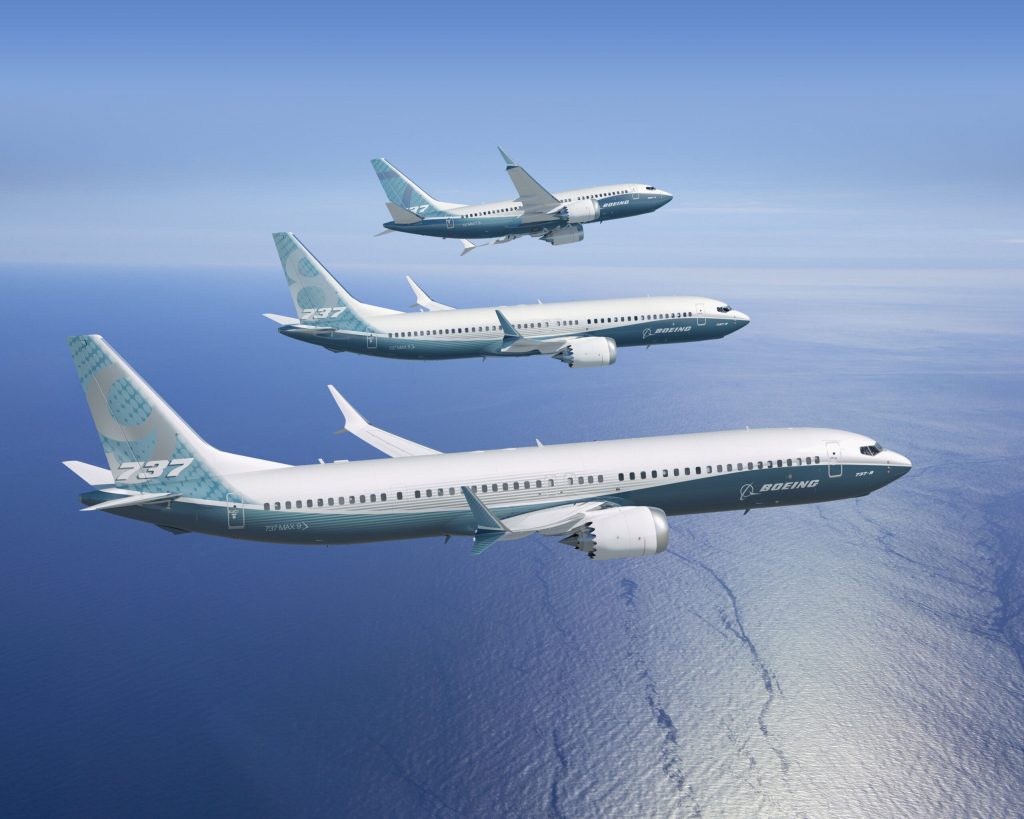The Boeing 737 MAX will return to the skies globally next year following its 18-month grounding and recertification. Currently, three 737 MAX variants are in service, the MAX 7, 8, and 9, with the latter two being the most popular. Let’s find out more about the differences between these variants.
Size
The most obvious difference between the three aircraft is their physical dimensions. As you may have guessed from the name, the MAX 7 is the smallest of the three aircraft, with a length of 35.5 meters and a wingspan of 35.9 meters. Only two airlines have ordered the MAX 7, Southwest and WestJet, both of whom are looking to replace their older 737-700s.
The most popular variant of the 737 MAX is undoubtedly the MAX 8. The plane has racked up well over 2,000 orders with scores of airlines. The aircraft is 39.5 meters long and has the same wingspan as the MAX 7.
The 737 MAX 9 is the second-largest in the MAX family with a length of 42.1 meters and the same wingspan as the -7 and -8 at 35.9 meters. The aircraft features an auxiliary fuel tank, allowing it to have more range, a topic we’ll get to later.
Range
The primary reason to build the 737 MAX was to offer airlines more range and better efficiency, taking on the A320neo. Boeing achieved this by equipping all models with the new LEAP-1B engines from CFM International. The new engines and design changes made the 737 MAX over 14% more fuel-efficient than the 737NG family.
In terms of range, the smallest MAX can travel the furthest of the three. The MAX 7 has a range of 3,850 nautical miles, while the MAX 8 and 9 have a slightly lower range of 3,550 nautical miles. This allows the aircraft to narrowly beat the 3,400nm mark set by the A320neo but still comes in below the A321neo.
The MAX 9 can offer almost the same range as the -8 due to the addition of an auxiliary fuel tank. The last MAX 10 also uses an additional fuel tank to increase its range to 3,300 nautical miles. The use of auxiliary tanks has become common with both Airbus and Boeing as they try to make their narrowbodies travel as far as possible.
Seating capacity
The critical factor for most airlines is how many passengers they can fit in the aircraft. Airlines have a lot of liberty to decide the cabins, seat size, and layout, with seating capacity varying across airlines. For instance, Ryanair has fit a mind-boggling 200 seats in its 737 MAX 8 (which it now calls the MAX-200). Meanwhile, American Airlines’ MAX 8 only seats 172 passengers in the two-class configuration.
Boeing estimates that the average MAX 7 would seat anywhere between 138 to 153 passengers. The MAX 8 would seat between 162 to 178 passengers, while the MAX 9 would seat 178 to 193 passengers, depending on the configuration. The seating capacity of the MAX you’re flying solely depends on the airline you’re flying with and whether they are low-cost or full service.
The 737 MAX received its recertification in the US, Brazil, and Mexico earlier this month, setting the stage for a global return of the aircraft type. The next few months will see more airlines unground the plane and slowly restore passenger confidence.

